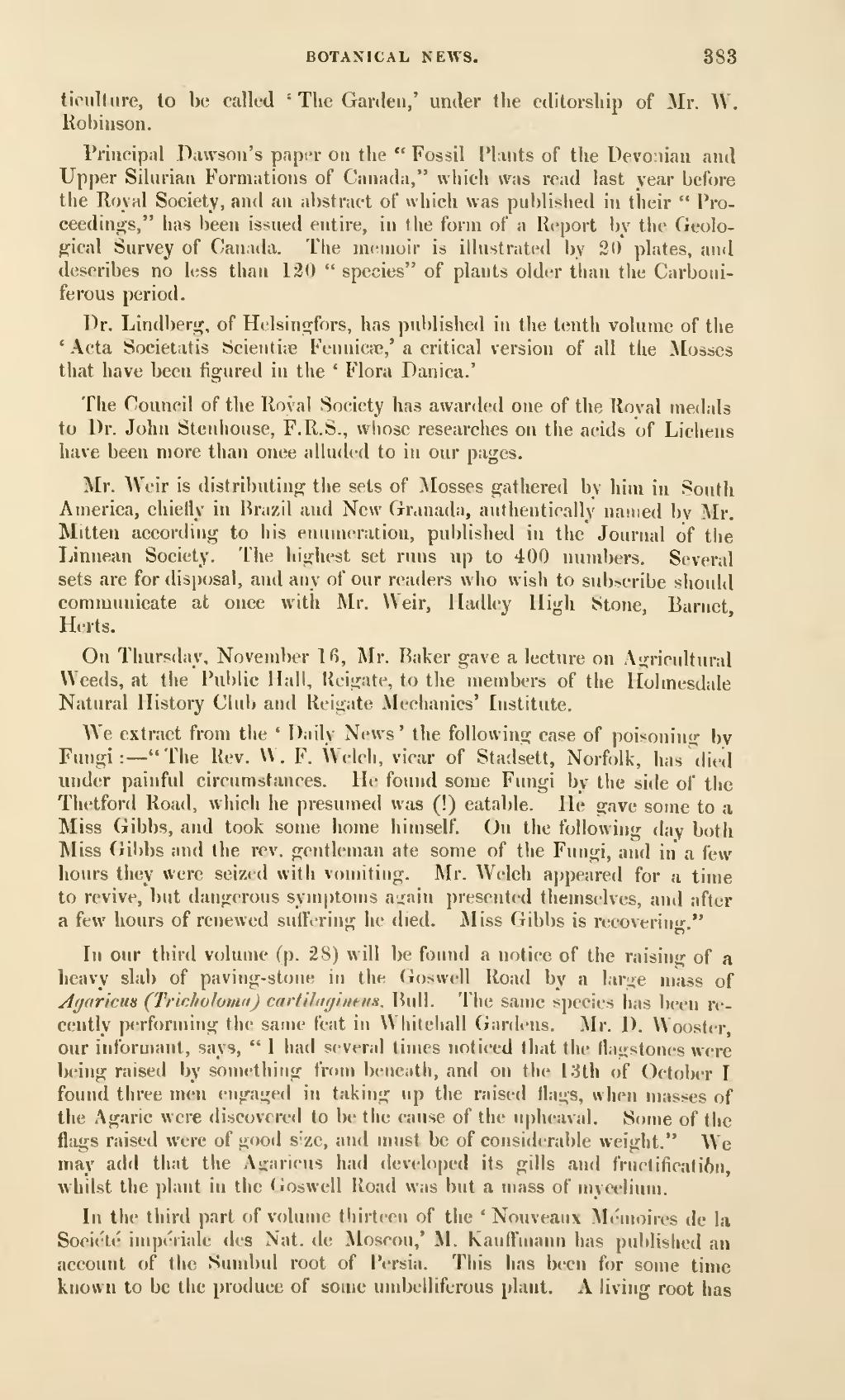BOTANICAL NEWS. 883
ticultiire, to be called ' The Garden,' under the editorship of Mr. W. Kobiuson.
Priiicipal Dawson's paper on the " Fossil Plants of the Devonian and Upper Silurian Formations of Canada," which was read last year before the Roval Society, and an abstract of which was publislied in their " Pro- ceedings," has been issued entire, in the form of a Report by the Geolo- p^ical Survey of Canada. The memoir is illustrated by 20 plates, and describes no less than 120 " species" of plants older than the Carboni- ferous period.
Dr. Lindberg, of Helsino^fors, has published in the tenth volume of the ' Acta Sooietatis 8cienti;e Fennicaj,' a critical version of all the Mosses that have been figured in the ' Flora Danica.'
The Council of the Royal Society has awarded one of the Roval medals to Dr. John Steidiouse, F.R.S., whose researches on the acids of Lichens have been more than once alluded to in our pages.
Mr. Weir is distributing the sets of Mosses gathered by him in South America, chiefly in Brazil and New Granada, authentically named by Mr. Mitten according to his enumeration, published in the Journal of the Linnean Society. The highest set runs up to 400 numbers. Several sets are for disposal, and any of our readers who wish to subscribe should communicate at once with Mr. Weir, Hadley High Stone, Barnet Herts.
On Thursday, November 16, Mr. Raker gave a lecture on Agricultural Weeds, at the Pul)lic Hall, Ucigate, to the members of the Hohnesdale Natural History Club and Reigate Mechanics' Institute.
We extract from the ' Daily News' llie following case of poisoniui;- by Fungi:— "The Rev. W. F. Welch, vicar of Stadsett, Norfolk, has "dieil under painful circumstances. He found some Fungi by the side of the Tiietford Road, which he presumed was (!) eatable. He gave some to a Miss (jibbs, and took some home himself. On the following day both Miss (iil)bs and the rev. gentleman ate some of the Fungi, and in" a few hours they were seized with vomiting. Mr. Welch appeared for a time to revive, but dangerous symptoms again presented themselves, and after a few hours of renewed suil'i-ring he died. Miss Gibbs is recoveriiif."
In our third volume (p. 28) will be found a notice of the raising of a heavy slab of paving-stone in the Goswell Road by a large mass of Agaricun (TrichoJoma) cartUngl tints. Bull. The same species lias been re- cently performing the same feat in Whitehall Gardens. Mr. D. Woostcr our informant, says, " I had several times noticed that the flagstones were being raised by something from beneath, and on the 13th of October I found three men engaged in taking up the raised flags, when masses of the Agaric were discovered to be the cause of the u])heaval. Some of the flags raised were of good size, and must be of considerable weight." We may add that the Aicaricus had developed its gills and fructiflcafiftn, whilst the plant in the (ioswell Road was but a mass of mycelium.
In the third part of volume thirteen of the ' Nouveanx Memoires de la Societe imperiale des Nat. de Moscou,' M. Kauft'mann has publislied an account of the Sumbul root of Persia. This has been for some time known to be the produce of some umbelliferous plant. A living root has
�� �
